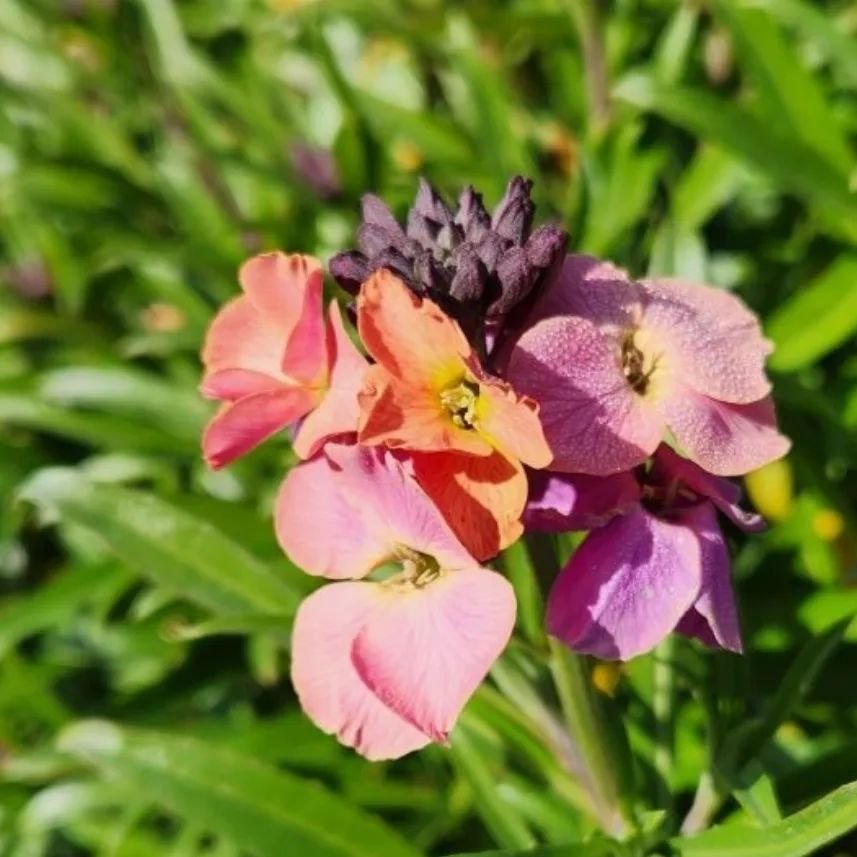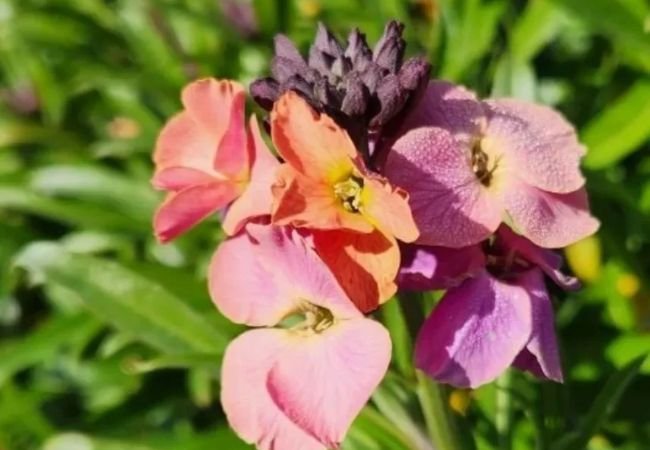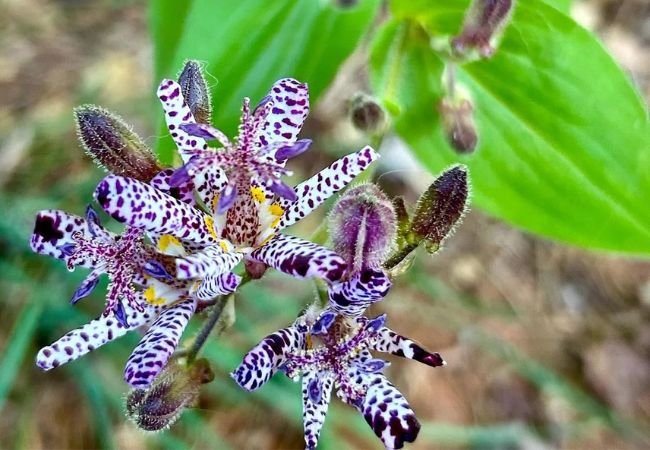Discover the colorful world of Wallflowers. Learn about their varieties, care tips, and sweet fragrance. Perfect for gardeners seeking early spring blooms and pollinator-friendly plants.
Wallflowers, with their bright colors and sweet fragrance, are a delightful addition to any spring garden. These cheerful plants have been favorites of gardeners for centuries, offering both beauty and a pleasant scent. In this article, we’ll explore the world of Wallflowers, their care, and why they’re a wonderful choice for your garden.
Here’s an easy-to-understand chart for Wallflowers:
| Attribute | Details |
|---|---|
| Botanical Name | Erysimum spp. |
| Common Name | Wallflower |
| Plant Zone | 3-9 |
| Sun Exposure | Full Sun to Partial Shade |
| Soil Type | Well-drained, moderately fertile soil |
| Watering | Moderate, allow soil to dry between waterings |
| Growth Habit | Biennial or short-lived perennial |
| Height/Spread | 1-3 feet tall, 1-2 feet wide |
| Special Features | Fragrant flowers in various colors; attracts pollinators; long blooming period; deer-resistant; good for borders and rock gardens |
What are Wallflowers?

Wallflowers belong to the genus Erysimum in the mustard family (Brassicaceae). They’re known for their clusters of four-petaled flowers in shades of yellow, orange, red, and purple. Many varieties have a sweet, honey-like fragrance.
Some popular types of Wallflowers include:
- Erysimum cheiri (Common Wallflower)
- Erysimum ‘Bowles’s Mauve’ (Perennial Wallflower)
- Erysimum linifolium ‘Variegatum’ (Variegated Wallflower)
The United States Department of Agriculture provides detailed information about the Erysimum genus.
Growing Wallflowers
Wallflowers are relatively easy to grow:
- Sunlight: They prefer full sun to partial shade.
- Soil: Well-draining, slightly alkaline soil is best.
- Planting: Sow seeds in late summer for blooms the following spring, or plant young plants in fall or early spring.
- Water: Keep soil moist but not waterlogged.
- Hardiness: Most varieties are hardy in USDA zones 6-9.
The Royal Horticultural Society offers comprehensive growing advice for Wallflower plants.
Caring for Wallflowers
To keep your Wallflowers healthy and blooming:
- Deadhead spent flowers to encourage more blooms.
- Cut back perennial varieties after flowering to maintain shape.
- Protect from strong winds, which can damage tall varieties.
- Watch for pests like aphids and flea beetles.
The University of California Agriculture and Natural Resources provides information on pest management that can be applied to Wallflowers.
Uses of Wallflowers
Wallflowers have several uses in the garden:
- Spring Color: They provide early spring color in beds and borders.
- Container Plants: Many varieties work well in pots and window boxes.
- Cut Flowers: Their fragrant blooms make lovely cut flowers.
- Pollinator-Friendly: They attract bees and butterflies. The U.S. Forest Service provides information on pollinator-friendly gardening.
Interesting Facts About Wallflowers
Did you know?
- The name “Wallflower” comes from their ability to grow in the cracks of stone walls.
- In the language of flowers, Wallflowers symbolize faithfulness in adversity.
- Some varieties of Wallflowers are edible and have been used in traditional medicine.
- Wallflowers have been cultivated since the 17th century and were particularly popular in Victorian gardens.
The Smithsonian Gardens often provides interesting insights into various plants and their cultural significance.
Ecological Benefits of Wallflowers
Wallflowers offer several ecological benefits:
- Early Nectar Source: They provide an important early food source for pollinators.
- Drought Tolerance: Once established, many varieties are quite drought-resistant.
- Adaptability: They can thrive in a variety of soil conditions, including poor soils.
The National Wildlife Federation explains the benefits of using plants that support local wildlife.
Wallflowers are charming, fragrant plants that can bring early color and sweet scents to your spring garden. Their easy care requirements, coupled with their benefits for pollinators, make them an excellent choice for many gardeners. Whether you’re looking to brighten up a border, fill a container, or simply enjoy their honey-like fragrance, Wallflowers are worth considering.
For more information on growing Wallflowers and other spring-blooming plants, visit the United States Botanic Garden website.
Remember, while Wallflowers are generally easy to grow, it’s always best to consider your specific climate and garden conditions. Don’t hesitate to consult local gardening experts or botanical gardens for advice tailored to your area. Happy gardening, and enjoy the vibrant colors and sweet scents of Wallflowers in your garden!
For more gardening tips and plant care guides, visit usagardenhub.com.






